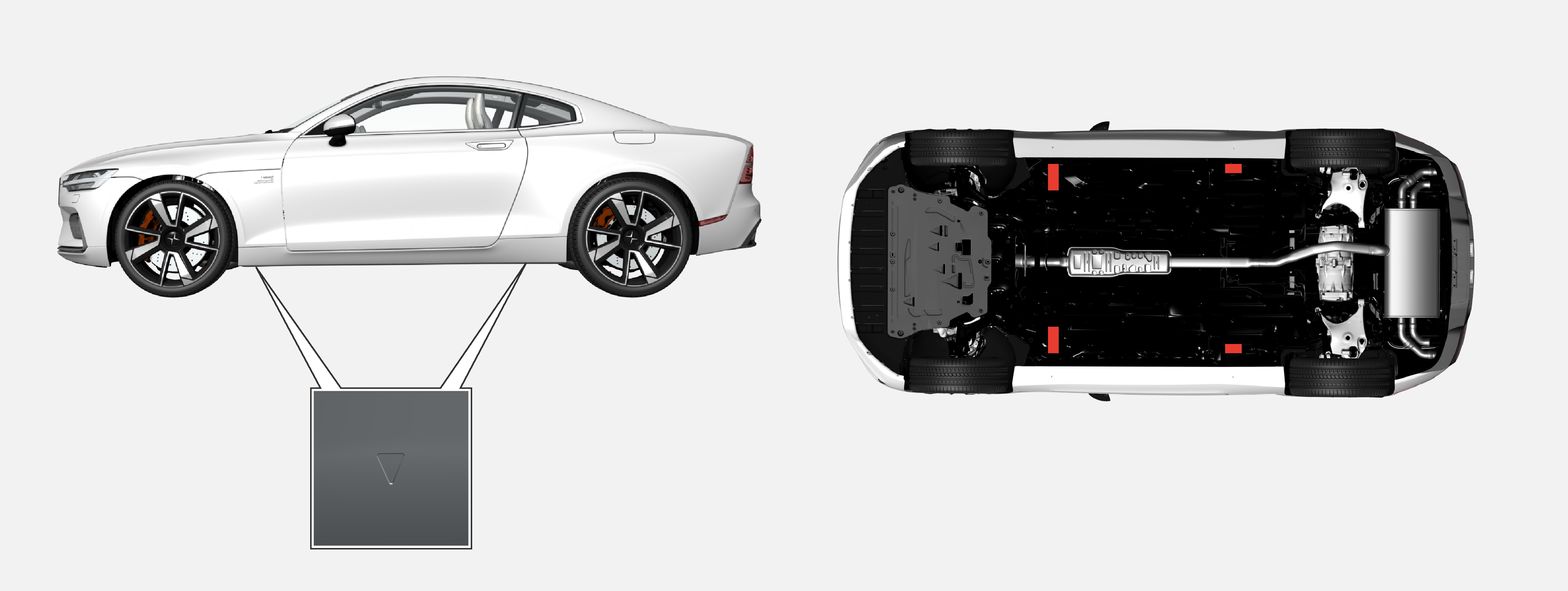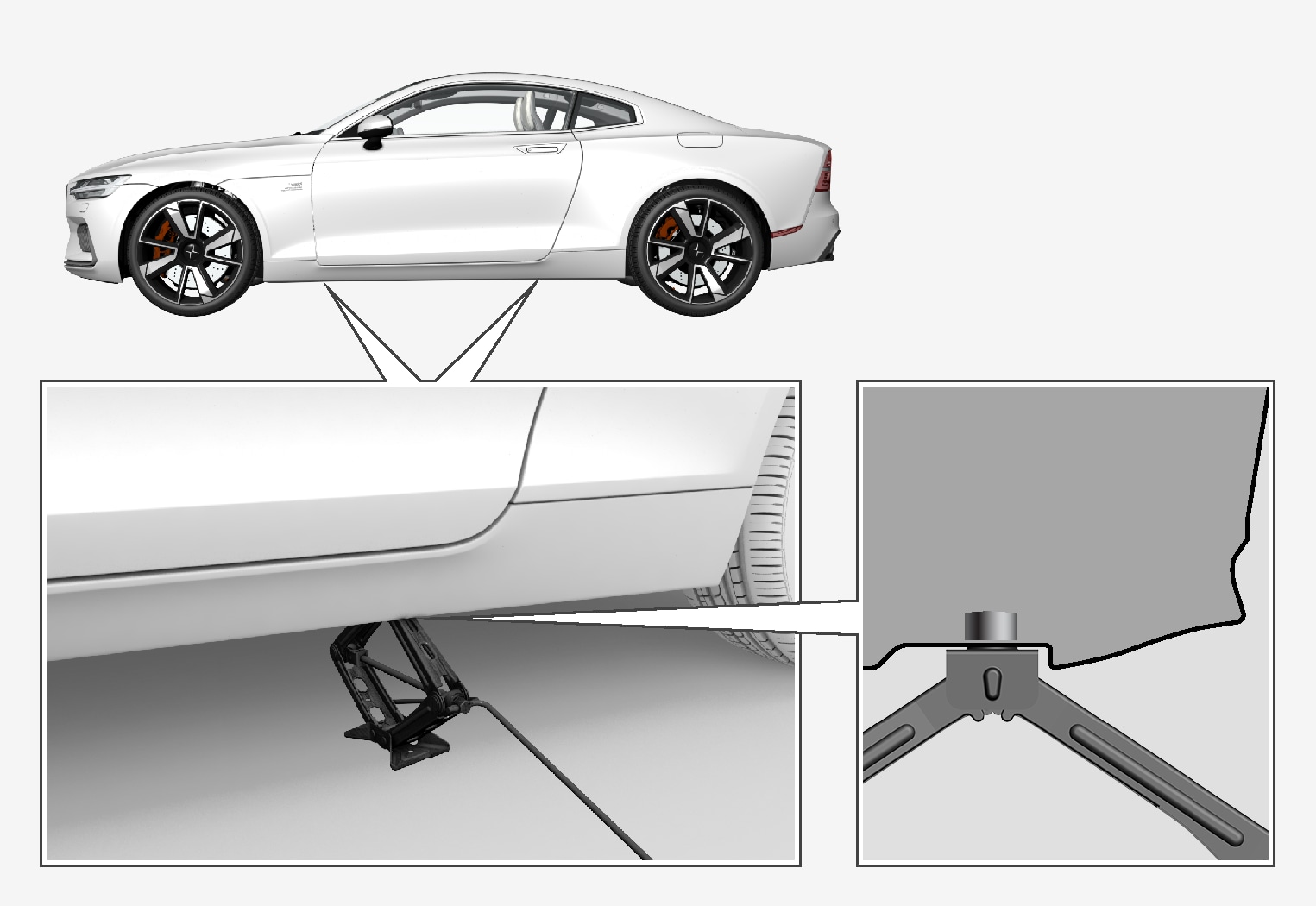Raise the car

Note
Polestar recommends only using the jack that belongs to the car model in question. If a jack is selected other than the one recommended by Polestar, follow the instructions supplied with the equipment.
The normal car jack is only designed for occasional, short-term use, such as when changing a wheel after a puncture. If the car is to be jacked up more often, or for a longer time than is required just to change a wheel, use of a garage jack is recommended. In this instance, follow the instructions for use that come with the equipment.
Warning
- Check that the jack is not damaged, that the threads are thoroughly lubricated and that it is free from dirt.
- Check that the jack is resting on a firm, level surface that is not slippery and is not slanted.
- Never position anything between the ground and the jack, nor between the jack and the car's jacking point.
- Passengers must leave the car when it is raised on the jack.
- If a wheel has to be changed in an environment where there is lots of traffic, for example, passengers must remain in a safe place.
- Use a jack designed for the car when changing wheels. Use supports to secure the car for all other work.
- Never crawl under the car or reach under with a part of your body when it is raised on a jack.
Warning
Set up the warning triangle and activate the hazard warning lights if a tyre is being changed in a location where there is lots of traffic, for example.
Place the jack or the lifting arms in the designated locations on the car's chassis. The triangle markings in the plastic cover indicate the locations of the jacking/lifting points. There are two jacking points on each side of the car. There is a recess for the jack at each point.
